Eric Rigall
Physical Knowledge Enhanced Deep Neural Network for Sea Surface Temperature Prediction
Apr 19, 2023



Abstract:Traditionally, numerical models have been deployed in oceanography studies to simulate ocean dynamics by representing physical equations. However, many factors pertaining to ocean dynamics seem to be ill-defined. We argue that transferring physical knowledge from observed data could further improve the accuracy of numerical models when predicting Sea Surface Temperature (SST). Recently, the advances in earth observation technologies have yielded a monumental growth of data. Consequently, it is imperative to explore ways in which to improve and supplement numerical models utilizing the ever-increasing amounts of historical observational data. To this end, we introduce a method for SST prediction that transfers physical knowledge from historical observations to numerical models. Specifically, we use a combination of an encoder and a generative adversarial network (GAN) to capture physical knowledge from the observed data. The numerical model data is then fed into the pre-trained model to generate physics-enhanced data, which can then be used for SST prediction. Experimental results demonstrate that the proposed method considerably enhances SST prediction performance when compared to several state-of-the-art baselines.
Physics-Guided Generative Adversarial Networks for Sea Subsurface Temperature Prediction
Nov 04, 2021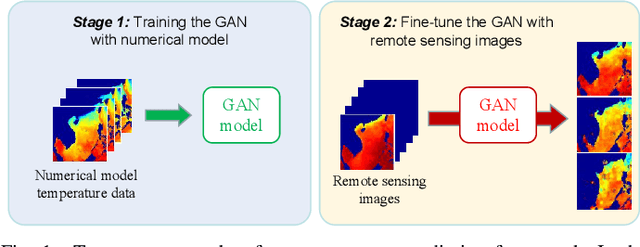
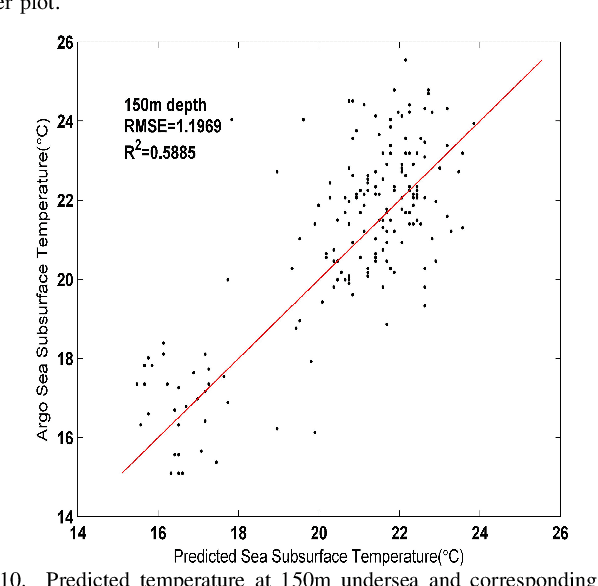
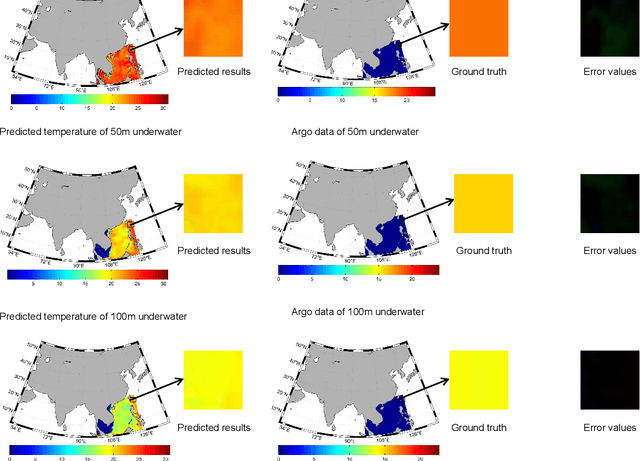
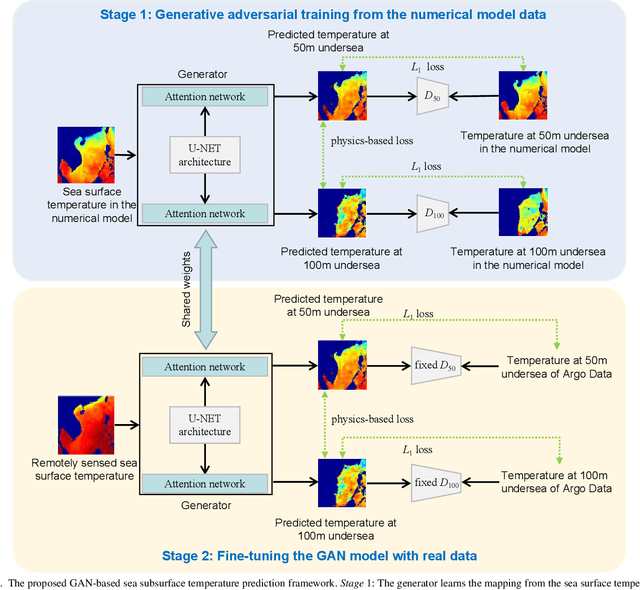
Abstract:Sea subsurface temperature, an essential component of aquatic wildlife, underwater dynamics and heat transfer with the sea surface, is affected by global warming in climate change. Existing research is commonly based on either physics-based numerical models or data based models. Physical modeling and machine learning are traditionally considered as two unrelated fields for the sea subsurface temperature prediction task, with very different scientific paradigms (physics-driven and data-driven). However, we believe both methods are complementary to each other. Physical modeling methods can offer the potential for extrapolation beyond observational conditions, while data-driven methods are flexible in adapting to data and are capable of detecting unexpected patterns. The combination of both approaches is very attractive and offers potential performance improvement. In this paper, we propose a novel framework based on generative adversarial network (GAN) combined with numerical model to predict sea subsurface temperature. First, a GAN-based model is used to learn the simplified physics between the surface temperature and the target subsurface temperature in numerical model. Then, observation data are used to calibrate the GAN-based model parameters to obtain better prediction. We evaluate the proposed framework by predicting daily sea subsurface temperature in the South China sea. Extensive experiments demonstrate the effectiveness of the proposed framework compared to existing state-of-the-art methods.
Wallpaper Texture Generation and Style Transfer Based on Multi-label Semantics
Jun 22, 2021


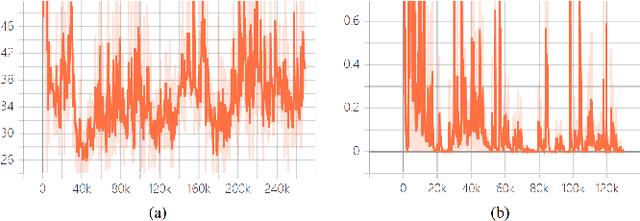
Abstract:Textures contain a wealth of image information and are widely used in various fields such as computer graphics and computer vision. With the development of machine learning, the texture synthesis and generation have been greatly improved. As a very common element in everyday life, wallpapers contain a wealth of texture information, making it difficult to annotate with a simple single label. Moreover, wallpaper designers spend significant time to create different styles of wallpaper. For this purpose, this paper proposes to describe wallpaper texture images by using multi-label semantics. Based on these labels and generative adversarial networks, we present a framework for perception driven wallpaper texture generation and style transfer. In this framework, a perceptual model is trained to recognize whether the wallpapers produced by the generator network are sufficiently realistic and have the attribute designated by given perceptual description; these multi-label semantic attributes are treated as condition variables to generate wallpaper images. The generated wallpaper images can be converted to those with well-known artist styles using CycleGAN. Finally, using the aesthetic evaluation method, the generated wallpaper images are quantitatively measured. The experimental results demonstrate that the proposed method can generate wallpaper textures conforming to human aesthetics and have artistic characteristics.
 Add to Chrome
Add to Chrome Add to Firefox
Add to Firefox Add to Edge
Add to Edge